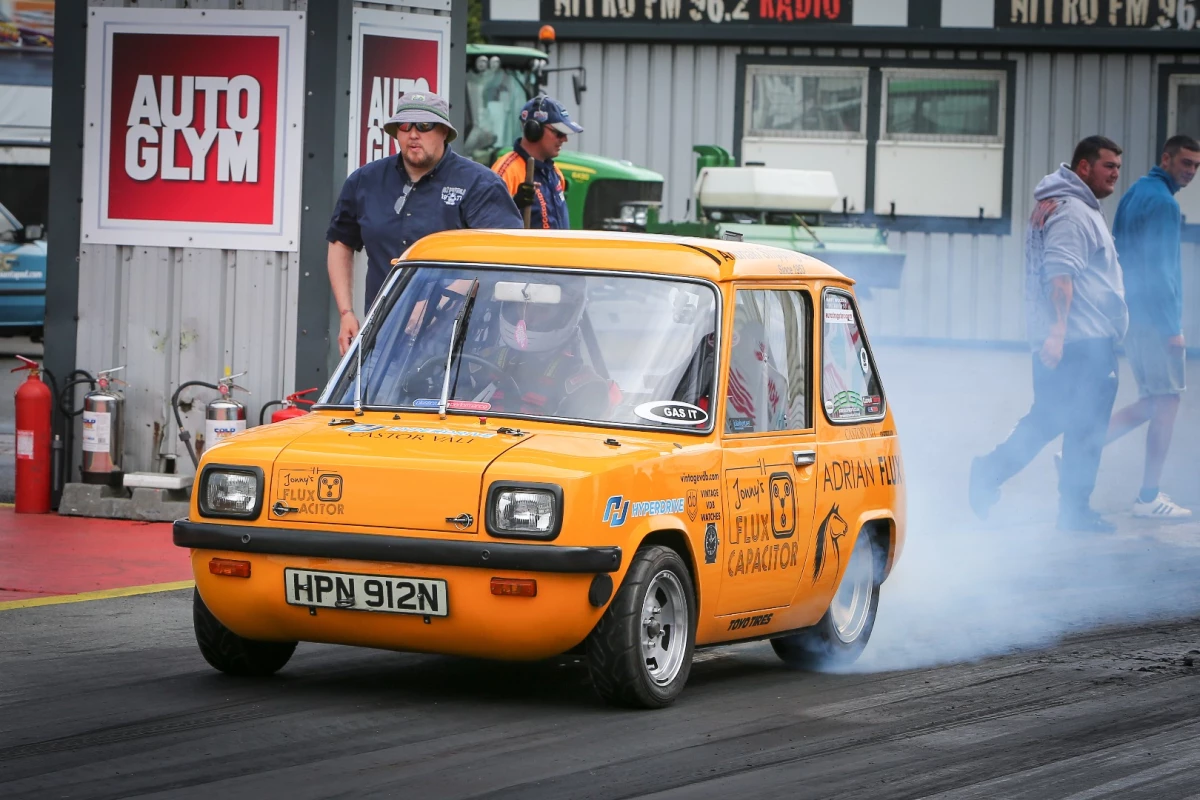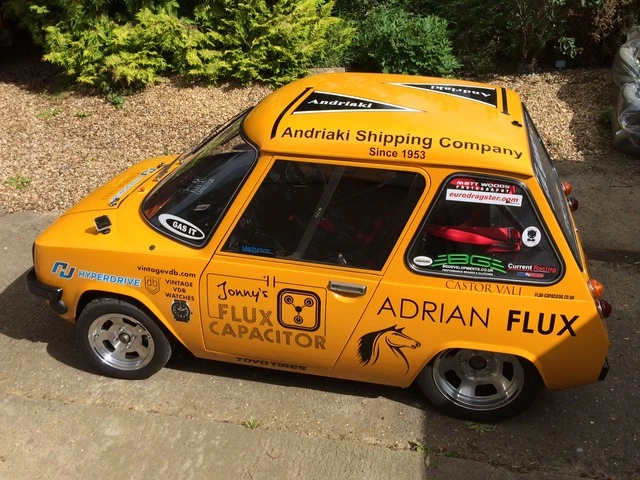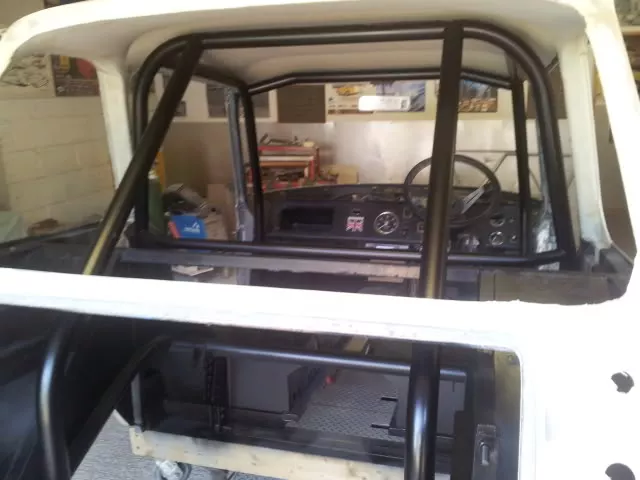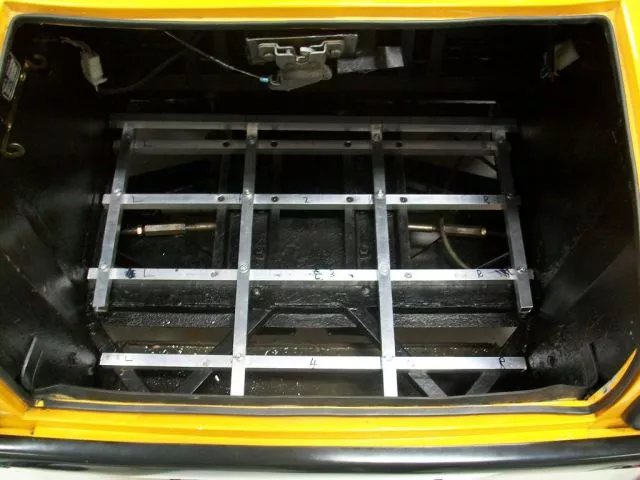If you had to guess the street-legal electric car with the quickest quarter-mile time, the Tesla Model S P85D or Rimac Concept One might immediately pop to mind. What wouldn't pop to mind, even if you exhausted every electric vehicle you could think of, is the Enfield 8000. That's partly because you may never have heard of it, but mostly because 8-hp mini cars from the 1970s are rarely in the running for "world's quickest" anything. But a heavily upgraded all-electric Enfield 8000 known as the "Flux Capacitor" has taken a world record with its recent 9.86-second quarter mile.
Back in 2012, Jonny Smith, a car guy and motoring journalist you may know as a presenter on Fifth Gear, decided to restore a retro EV, putting the same type of love and care into it that some would put into restoring a classic Mustang or Corvette. The flood-damaged 1974 Enfield 8000 made the perfect project car for Smith because he planned to upgrade the electric powertrain and circuitry from the start, so it didn't matter that the original hardware was in shambles.
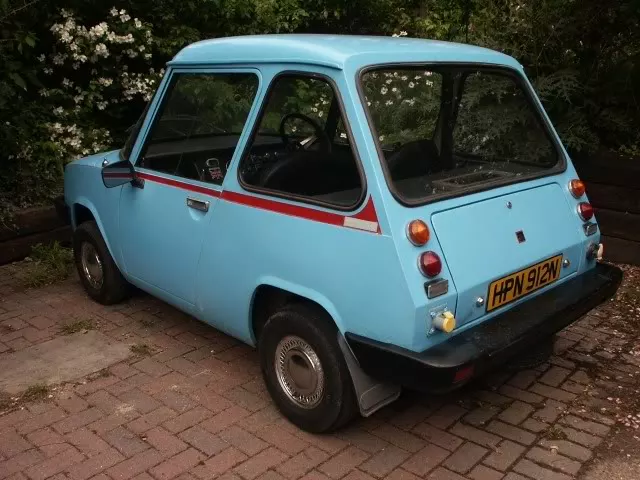
"The essence of this project is about resurrecting a forgotten EV underdog and giving it some 21st century hot rod inspired treatment, but with tongues in cheeks," Smith wrote on the Flux Capacitor blog back in January 2012. "It's all about taking an unlikely contender – an automotive Rocky Balboa – and turning it into a pint-sized zero emission hero."
In its day, the British-built Enfield 8000 relied on an 8-hp electric motor and lead acid batteries to power it up to about 45 mph (72 km/h) and 40 miles (64 km) per charge. That's a bit underpowered for a hero car, pint-sized or not, so Smith upgraded things ... by about 100 times. His Flux Capacitor uses twin DC motors from Current Racing, the guys behind the Beetle-based Black Current III, which owns the quarter-mile world record for fastest electric car with full-body (non-street-legal category). Those motors are mounted in series and drive the rear wheels without a gearbox.

When all fired up by the 188 lithium-ion battery cells, spread around the car in four individual packs, the motors put out 800+ hp and 1,200+ lb-ft of torque ... to power a tiny car that weighs 2,028-lb (920 kg). It's like Rocky Balboa hauled his log through the knee-high Russian snow and kept right on going across the rest of Russia, and back and forth, back and forth, until he was one giant muscle.
Plenty of upgrading was performed around the powertrain's greater environs, too. Major modifications and additions include a Webster Race Engineering roll cage welded to the original chassis, an overhauled suspension, larger 12-in front/14-in rear wheels, bespoke front disc brakes and Lexan windows.
The Flux Capacitor became track-worthy last year, and Smith and his project partners began testing and tweaking. Quarter-mile times started off around 16 seconds but had no intention of staying there, quickly dropping into the 12s and then the 11s. By September, the Flux Capacitor had hit 10.84 seconds, surpassing the Tesla Model S P85D and laying claim to the title of fastest street-legal EV in Europe.

By early 2016, Smith focused in on the world record, but a fearsome White Zombie Datsun still stood in his way. He inched closer, his times dipping farther into the 10s – but not quite far enough for the books.
Along with the aforementioned Black Current III, which sits on the NEDRA list at 9.35 seconds and recently hit 8.71, the White Zombie Datsun and its 10.25-second street-legal EV quarter-mile world record had served as the inspiration behind Smith's entire journey, even before he planned a world record attempt. It's quite fitting, then, that when the Flux Capacitor did break the world record, it nosed its way comfortably between those two. It happened last Saturday at the Santa Pod Raceway's Dragstalgia event, where Smith made the 9.86-second run at an average speed of 121 mph (195 km/h).
"Despite so many racers telling me that a 68-inch wheelbase car could never safely go as fast as we wanted, the Enfield has proved them wrong," says Smith. "Originally the car was designed to drive up to speeds of 40 mph. Now it triples the speed within quarter of a mile without any aerodynamic alterations – which is testament to the original design."

In addition to its world-record quarter mile, the Flux Capacitor has a spec sheet filled with other impressive numbers, including a listed sub-3-second 0-60 mph (96.5 km/h), 6-second 0-113 mph (182 km/h), and 140-mph (225 km/h) top speed. Its range? An underwhelming 50 miles (80 km). But Smith clearly hasn't built a Sunday cruiser for cross-country road trips to granny's.
"The car never feels like it is out of its comfort zone," says Smith. "To be honest I have disconnected the speedo, and just drive it by feel. You quickly forget how small it is when the lights go green. The instant electric torque delivery is something I have never experienced in over 15 years of driving and testing sports cars."
The car made the run in street-legal guise, which meant using treaded tires and leaving behind the wheelie bars you'll see in some of the photos. So while Smith didn't best his mentors at Current Racing, he didn't need to to capture the street-legal EV record.
Smith kindly let us browse through a huge album of his build and drive photos, so our gallery highlights the journey from original Enfield 8000 through to world record run.
Source: Flux Capacitor website
